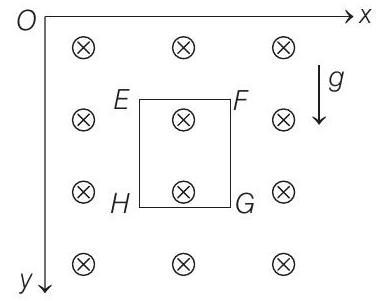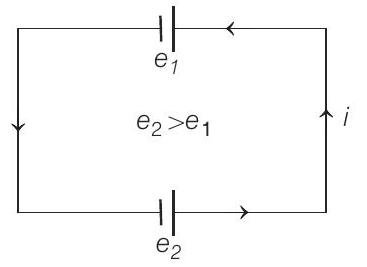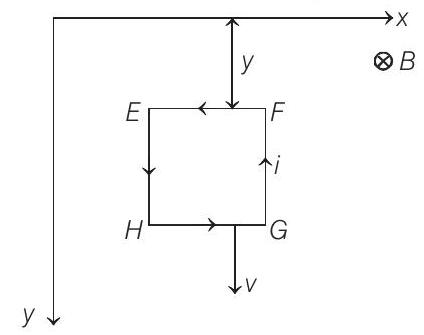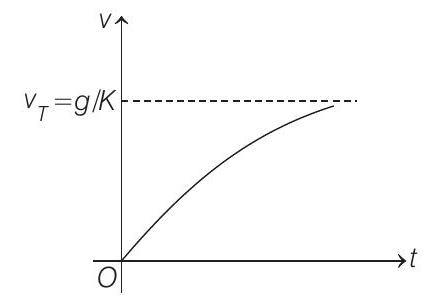Electromagnetic Induction and Alternating Current 2 Question 7
####8. A magnetic field
(1999, 10M)

(a) the induced current in the loop and indicate its direction.
(b) the total Lorentz force acting on the loop and indicate its direction.
(c) an expression for the speed of the loop
Show Answer
Answer:
Correct Answer: 8. (a)
(b)
(c)
Solution:
- When the side
(a) Induced emf is
where,
Direction
Alternate solution (of part a)
Motional emf in
Motional emf in
Similarly, motional emf in
Polarities of

and direction of current will be counter-clockwise.
(b) Total Lorentz force on the loop :

We have seen in part (a) that induced current passing through the loop (when its speed is
Now, magnetic force on
(upwards)
(c) Net force on the loop will be
where,
or
This equation gives

Here,
i.e. speed of the loop is increasing exponentially with time
at






